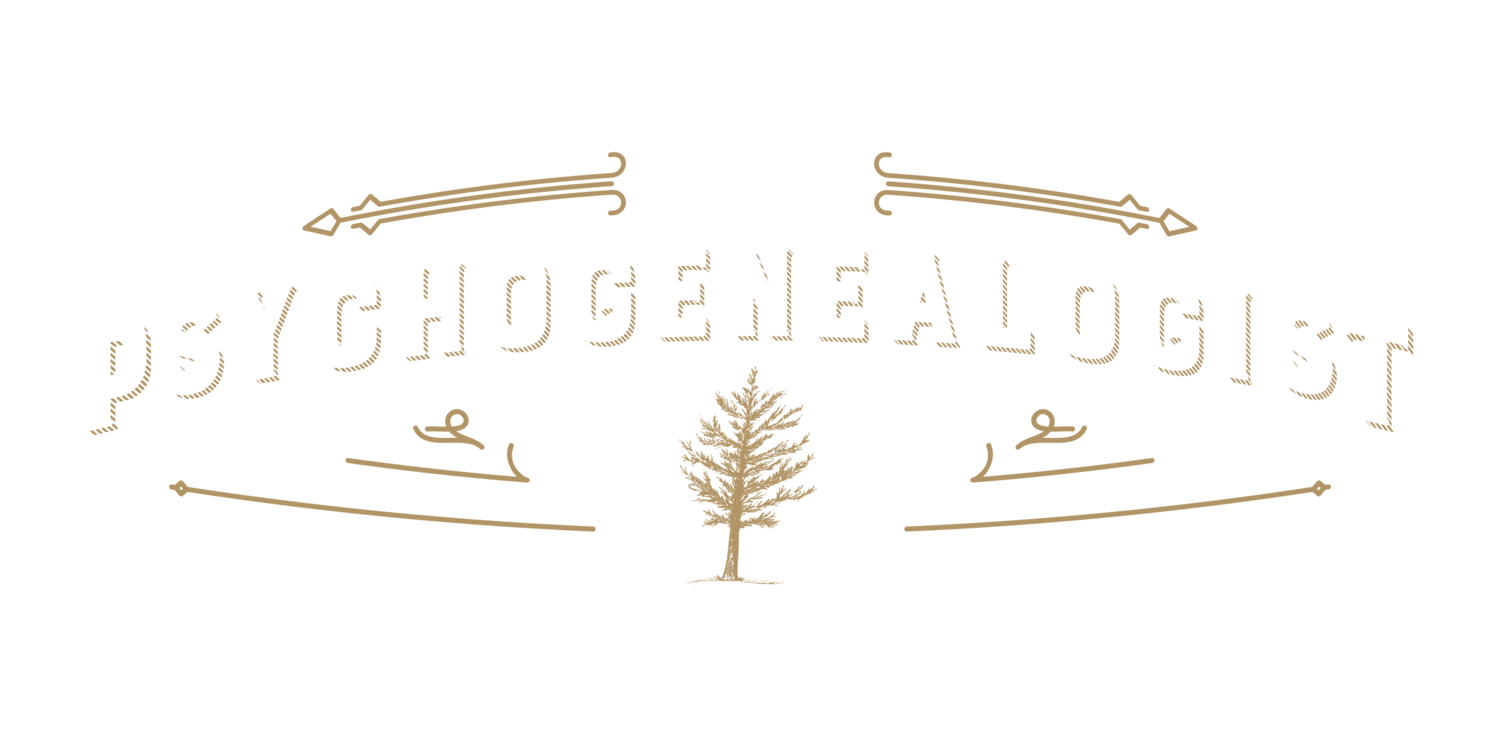This is the surprising story about one of my ancestors and her tragic death by fire in 1941.
As you listen to it take a moment to think about your own family history and personal psychology. How have you or your family been impacted by similar stories in your own past? What can we learn and teach by telling these personal stories to others?
Julia Kelly (1869-1941) was my 2nd great aunt. She was one of the four Kelly children that my 2nd great grandmother, Ellen (Sullivan/Kelly) Hanley, had with her first husband, Michael Kelly (who died in 1875). Technically, Julia would be a half 2nd great aunt of mine, because only her mother (not her father) is in my direct lineage. In other words, she is the half sister of my great-grandfather.
Headstone for Julia Kelly (1870-1941) at Forest Hill Cemetery in Houghton, Michigan
You may remember her (full) brother, Cornelius Kelly, who I wrote about here: Blind Cornelius Kelly and the Beauty of Gaelic Prayer.
After Michael died, Ellen (1850-1938) married Patrick Hanley (1858-1923) and they had several children, one of whom was my great-grandfather, Michael Hanley (1890-1964). Michael married Alma Ratz (1894-1979) (who you can see here in my favorite Pic of the Week so far).
More than a decade ago my father took my grandfather and my grandfather’s sisters up to visit the “homestead” in Atlantic Mine, Michigan where their parents were born and raised. This is where my grandfather and his siblings would visit during the summers when they were children.
On this trip my father recorded a couple hours worth of stories my great aunts and grandfather shared about their family history.
One such story, told by my great Aunt Beverly told about how her Aunt Julia "burned to death." I had never heard this story before and was taken aback by it the first time I listened to this recording.
Great Aunt Beverly would have been about 12 years old when her Aunt Julia died. Here, in her own voice, is a short 30 second clip of Aunt Beverly describing the scene:
Here is the transcript:
"And then Aunt Julia was there and she would make the beds and do all that kind of stuff. Well, her eyesight got very bad. And she um was putting stove in the wood, in the wood stove one day and her apron caught fire and she burned to death. On the floor of the kitchen you could see her outline when we came up there."
On a separate occasion Aunt Bev added some more context. In her own hand written recollections she said:
“Con’s [Cornelius Kelly] sister Julia Kelly also lived and worked in the Atlantic Mine home. It seemed like when she was older she started having problems with her eyesight. She would stumble over lamp cords, etc. One day she was putting wood in the kitchen wood stove when her apron caught fire and she was burned to death. Not sure if she died there or was hospitalized when she died. The summer after she died I remember there were scorch marks on the floor where the accident happened. It gave me the creeps. We have no photos of Julia. She made the beds each day, dusted, and worked on meals etc. Neither Con or Julia married or left the family home.”
I recently discovered Aunt Julia's death certificate and it appears to corroborate the story, listing her cause of death as "Burns of 3rd Degree."
Death Certificate of Julia Kelly (1869-1941)
Note the discrepancy on the death certificate that lists Julia's father as "Cornelies" Kelly. This may be referring to Corenlius Kelly who was actually Julia's brother. The information I have is that her father was, in fact, a “Michael” Kelly.
That said, my information on Michael is sketchy and incomplete. Cornelius was a popular Irish name in this family and it is possible that Michael’s middle name was Cornelius. It may also be possible that her brother, Con, was mistaken as the father. Or it could simply be a mistake.
There is also a small discrepancy between the year of her birth as listed on the death certificate (1869) versus her headstone (1870).
Here are some of the things I wonder about as I see, and hear, this story from my ancestors:
- How are experiences of trauma and loss like this experienced in families?
- How, why, and when are these stories told or hidden?
- Why did Julia and Con never leave the family home?
- Can stories of trauma, death, and loss be transmitted intergenerationally in ways that are outside our immediate awareness?
- Why hadn’t I ever heard this story before a year or two ago?
- Is there anyone alive today who ever knew or met my Julia Kelly?
Though tragic, these are important stories to know and tell. If you dig deep enough (and sometimes not so deep) you are likely to find stories of trauma and loss in your own family. I would encourage you to think about how these stories have impacted your personal psychology as well as the larger psychology of your extended family.
Do you have an old photograph or a genealogical story that you would like to share? I am happy to consider guest submissions for possible Pic of the Week or other blog posts in the future. Send an email to info@psychogenealogist.com for more information.
If you like what you are reading here at The Psychogenealogist please consider sharing with a friend or signing up for free below!



